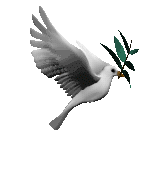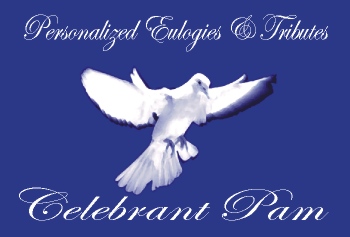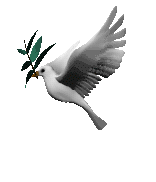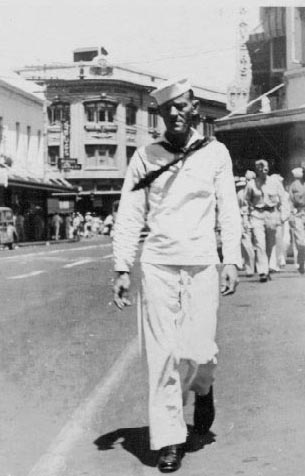
|

|

|
|
Celebrating Life Everyone Has A Story... |
|
Journal | Press | New Profession | Blog |
 
He survived all the campaigns in the South Pacific only to die from cigarettes in 1966 at the age of 62. He was only 37 years of age at the time older than most of his shipmates. They all called him "Pops". This is his tour of duty on the USS Maryland BB-46: Assigned sentinel duty along the southern supply routes to Australia and the Pacific fighting fronts, Maryland and Colorado operated out of the Fiji Islands in November and advanced to the New Hebrides in February 1943. Her return to Pearl Harbor after 10 months in the heat off the South Pacific brought the installation of additional 40mm. antiaircraft protection. In the vast amphibious campaigns of the Pacific the firepower of Maryland and her sister ships played a key role. Departing the Hawaiian Islands 20 October for the South Pacific, Maryland became flagship for Rear Adm. Harry W. Hill's Southern Attack Force in the Gilberts Invasion, with Maj. Gen. Julian C. Smith, Commander, 2d Marine Division, embarked. Early on 20 November her big guns commenced 5 days of shore bombardment and call fire assignment in support of one of the most gallant amphibious assaults in history, at Tarawa. After the island's capture, she remained in the area protecting the transports until she headed back ~ to the United States 7 December. Maryland steamed from San Pedro 13 January 1944, rendezvoused with TF 53 at Hawaii, and sailed in time to be in position off the well-fortified Kwajelein Atoll in the Marshalls on the morning of the 31st. Assigned to reduce pillboxes and blockhouses on Roi Island, the old battleship fired splendidly all day and again the following morning until the assault waves were within 500 yards of the beach. Following the operation she steamed back to Bremerton, Wash., for new guns and an overhaul. Two months later Maryland, again readied for battle sailed westward 5 May to participate in the biggest campaign yet attempted in the Pacific war—Saipan. Vice Adm. R. K. Turner allotted TF 52 3 days to soften up the island before the assault. Firing commenced 0545 on 14 June. Silencing two coastal guns, Maryland encountered little opposition as she delivered one. devastating barrage after another. The Japanese attempted to strike back through the air. On the 18th the ship's guns claimed their first victim but 4 days later a Betty sneaked in flying low over the still-contested Saipan hills and found tw o anchored battleships. Crossing the bow of Pennsylvania, she dropped a torpedo which opened a gaping hole in Maryland's portside. Casualties were light and in 15 minutes she was underway for Eniwetok, and shortly thereafter to the repair yards at Pearl Harbor. With an around-the-clock effort by the shipyard workers, on 13 August, 34 days after arrival, the ship again steamed north for the war zone. Rehearsing briefly in the Solomons she Joined Rear Adm. J. B. Oldendorf's Western Fire Support Group (TG 32.5) bound for the Palau Islands. Firing first on 12 September to cover minesweeping operations and underway After demolition teams, she continued the shore bombardment until the landing craft approached the beaches on the 15th. Four days dater organized resistance collapsed, permitting the fire support ships to retire to the Admiralty Islands. Reassigned to the 7th Fleet, Maryland sortied 12 October to cover the important initial landings in the Philippines at Leyte. Despite floating mines, the invasion force entered Leyte Gulf! on the 18th. The bombardment the following day and the landings of the 20th went well, but the Japanese decided to contest this success with both kamikazes and a three-pronged naval attack. Forewarned by submarines and scout planes, the American battleship-cruiser force steamed 24 October to the southern end of Leyte Gulf to protect Surigao Strait. Early on the 25th the enemy battleships Fuso and Yamishiro led the Japanese advance into the Strait. The waiting Americans pounded the. enemy ships severely. First came torpedoes from the fleeting PT boats, then more torpedoes from this daring destroyers. Next came gunfire from the cruisers. Finally, at Q355 the readied guns of the battle. ship line opened fire. Thunderous salvos of heavy caliber fire slowed the enemy force and set the Japanese battle ships on fire. Leaving their doomed battleships behind, the decimated enemy ships fled; only a remnant of the original force escaped subsequent naval air attacks. Similarly other U.S. forces blunted and repulsed attacks by the center and northern enemy forces during the decisive Battle for Leyte Gulf. In the aftermath of this important victory, Maryland patrolled the southern approaches to Surigao Strait until 29 October; after replenishment at Manus, Admiralties, she resumed patrol duty 10 November. Japanese air attacks continued to pose a definite threat. During a raid on 27 November, guns of TG 77.2 splashed 11 of the attacking planes. Shortly after sunset 2 days later, a determined suicide plane dove through the clouds and crashed J!Maryland between t.turrets Nos. 1 and 2. Thirty-one sailors died in the explosion and fire that followed; however, the sturdy battleship continued her patrols until relieved 2 December. She reached Pearl Harbor 19 December and during the next 2 months workmen repaired and refitted "Fighting Mary." |
|
Copyright © 2005- Pam Meily Vetter. All rights reserved. ADA Compliance Page Privacy and Cookie Policy |